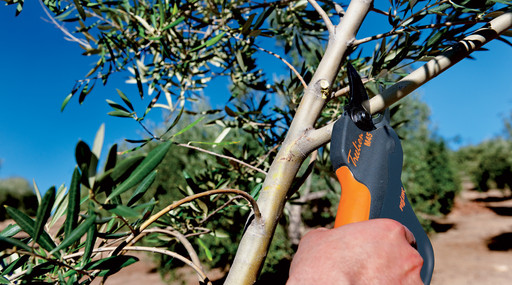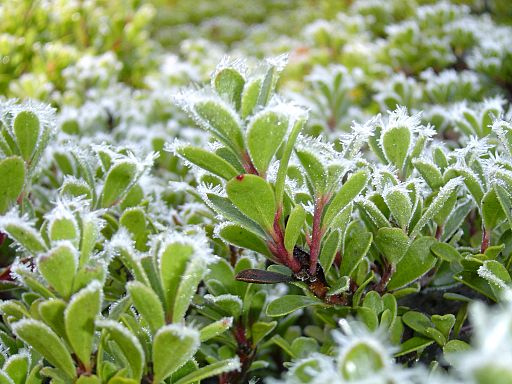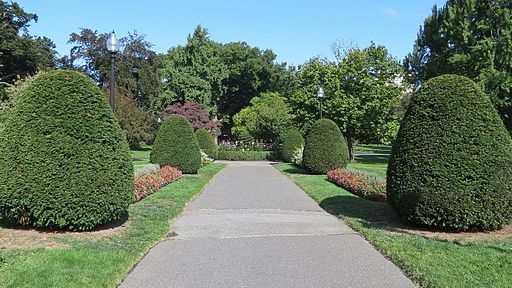A Pruning Guide for the Squeamish
Stubs are what is left of a woody twig or branch after the person pruning it has failed to cut it off at the proper place, which is close to a node where it joins the main plant, and instead has cut it haphazardly somewhere along its length. Shears by definition make cuts haphazardly on woody plants, even if at a distance the poor shrub looks neatly trimmed in shapes that some people find pleasing. Who hasn’t looked at a shrub minding its own business and thought, “That bush would be much more attractive shaped like a cube”? After several swipes of the shears, the bush appears neatly cubed from a distance, but upon closer inspection it will be evident it has suffered numerous wounds it will have trouble healing, if it can do so at all. Don’t leave stubs!

Hand pruners – or secateurs – in use. Photo by Pellencgroup. The cut being made in the photo is too far out along the branch to be a proper pruning cut. It could be a preliminary cut intended to take away most of the weight of the branch to reduce the possibility of bark tearing away from the trunk when the branch falls loose. In that case, the final pruning cut should be close to – but not flush with – the trunk, as shown with the cut a bit higher on the trunk.
- To preserve the safety and well-being of people, other animals, and property. Obviously, this applies primarily to trees, since shrubs are typically less capable of menace.
- To preserve or improve the health of the plant being pruned, such as by removing dead wood and crossing branches.
- Aesthetics, which of course is in the eye of the beholder, though the beholder should remain mindful of the precedence of reasons one and two, and of the vital importance of not leaving stubs.
Later in the year, in winter and especially in late winter, it is alright to perform major pruning on many woody plants because they are dormant. The plant’s hormones will not awaken it to push out new growth at that inopportune time. The exception is a sappy plant such as a maple tree. As anyone knows who has ever tapped a sugar maple tree for maple syrup, a maple produces sap copiously in late winter and early spring, and drawing too much of it at one time, as occurs in cutting off a major limb, will weaken the tree. It’s better to leave pruning of sappy plants until summer, when they will only dribble, and not gush, from wounds.
These are all great bits from a first series episode of Monty Python’s Flying Circus, but the portion relevant to this post begins at the 9:46 mark of the video.
As for appearance, while there are few people who can carry off the page boy haircut look successfully, there are for some bewildering reason an awful lot of people who think the plant equivalent of that haircut looks just dandy on their shrubs. If the shrubs themselves could speak, they might express a preference to be left alone to allow their natural beauty to shine through, with only an occasional light touch from a deft hand to help them look their best. Most of all, to keep trees and shrubs beauteous and robust, don’t leave stubs!
— Izzy 


